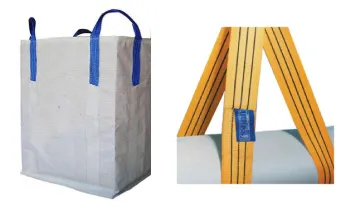Understanding the Functionality of Compound Feed Sewing Machines in Modern Textile Industry
Understanding Compound Feed Sewing Machines
A compound feed sewing machine is a specialized piece of industrial sewing equipment used primarily in the textile and garment manufacturing industries. Unlike the traditional sewing machines that rely solely on either the needle or the fabric feed mechanism, a compound feed machine integrates multiple feeding methods to enhance sewing efficiency and quality. This technology plays a pivotal role in producing high-quality seams in various materials, especially those that are thick or layered.
How Compound Feed Works
The compound feed mechanism combines three feeding actions needle feed, walking foot, and feed dog. This multi-faceted feeding system ensures that the fabric is fed evenly and consistently through the machine, preventing issues like fabric slippage or distortion.
1. Needle Feed As the needle moves up and down, it helps draw the fabric into the machine, providing precision in the stitching process. This action is essential for maintaining the alignment of layers, particularly in multitasking operations where several materials are involved.
2. Walking Foot The walking foot clamps down on the fabric while it moves through the sewing machine. This foot is designed to move in synchronization with the feed dog, allowing the fabric to advance smoothly without puckering or shifting. The walking foot is particularly beneficial when working with heavy fabrics, as it distributes pressure evenly.
3. Feed Dog The feed dog, which is the part of the machine that grips and advances the fabric, works in conjunction with both the needle feed and walking foot. It provides the necessary motion to push the fabric through the sewing area, ensuring that all layers of material are fed at the correct rate and maintaining consistent stitching tension.
Advantages of Using a Compound Feed Sewing Machine
The benefits of using a compound feed sewing machine are numerous
. Primarily, these machines are favored for their ability to handle a wide variety of materials, including leather, denim, canvas, and multiple layers of fabric.what is a compound feed sewing machine

- Enhanced Stitch Consistency The combined feeding mechanism significantly reduces the risk of uneven stitching, which is a common problem when working with thick or slippery fabrics.
- Increased Productivity The efficient feeding system allows for faster sewing speeds, improving overall production rates without compromising the quality of work.
- Versatility Compound feed machines can be adapted for various industrial applications, making them ideal for manufacturers who produce diverse products. This versatility makes them an essential asset in garment production, upholstery, and other sewing industries.
- Reduced Skill Level Requirement Operators may find it easier to produce high-quality seams without requiring extensive experience, as the machine compensates for many common sewing challenges.
Applications
Compound feed sewing machines are widely used in the production of garments, bags, sportswear, and upholstery items. Their ability to sew through multiple layers of heavy or stretch fabrics makes them a preferred choice in any setting requiring robust and reliable seam integrity. Manufacturers producing items such as outdoor gear, leather products, and heavy-duty work clothing particularly benefit from the capabilities of these machines.
Conclusion
In conclusion, a compound feed sewing machine represents an important advancement in industrial sewing technology. Its integrated feeding mechanism allows for high-quality, efficient sewing, making it indispensable in various manufacturing sectors. Whether you are a small workshop or a large-scale textile manufacturer, investing in a compound feed sewing machine can greatly enhance your production capability and product quality. Understanding how to utilize this machine effectively can lead to better results and increased profitability in your sewing operations.
-
Heavy Duty Leather Sewing Machine: A Must-Have for Professional LeatherworkNewsMay.28,2025
-
Leather Sewing Machine: Essential for High-Quality LeathercraftNewsMay.28,2025
-
Extra Heavy Duty Sewing Machine for Premium Leather ApplicationsNewsMay.28,2025
-
Walking Foot Cylinder Arm Sewing Machine: Precision and Power CombinedNewsMay.28,2025
-
Industrial Cylinder Arm Sewing Machine: Engineered for High-Performance StitchingNewsMay.28,2025
-
Cylinder Bed Sewing Machine: A Powerful Solution for Precision StitchingNewsMay.28,2025
-
Zigzag Sewing MachineNewsMay.12,2025





























